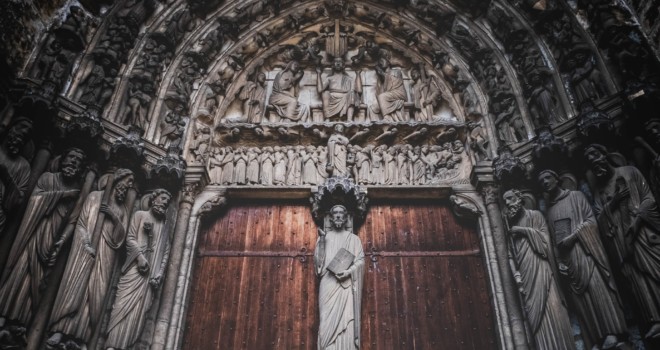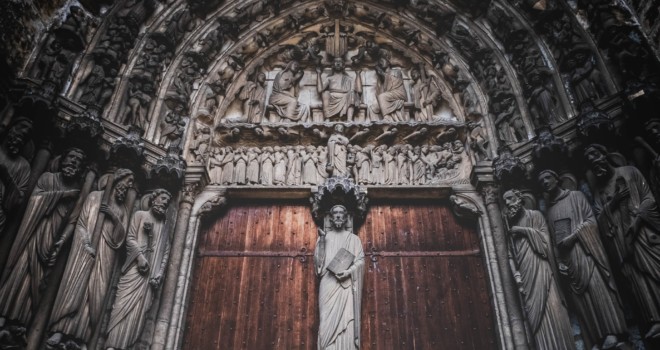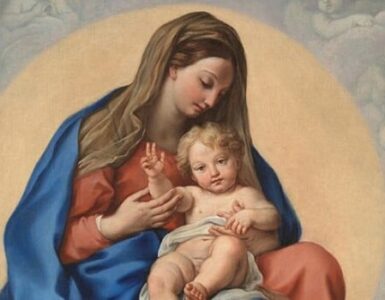Catholic is a term borrowed from an ancient Greek word meaning universal. This universality is one of the four marks of the true Church as expressed in the creed. But just how is the Catholic Church universal?
One immediately thinks of the authority of the popes and ecumenical councils, which are global, whether recognized or not. The many rites of the Church, including the extent to which Eastern rites have been welcomed, also come to mind. Then there is the sheer global scope of Catholicism.
But Catholicism, while it has always been the universal Church, has not always been global in fact. Yet it was still the Catholic Church when it was confined to Western Europe during most of the Middle Ages. Likewise, the number of rites has waxed and waned over time but the catholicity of the Church has remained constant. And yes, the pope has universal authority but this is to beg the question: why is his authority absolute in this way?
Here are seven ways the Catholic Church is truly catholic.
1. Participation in the fullness of God
Through the Eucharist, which is the substance of God-made-man, the Church becomes the visible manifestation of God’s enduring presence on earth. St. Paul promised this in Ephesians 1:23, describing the Church as the body of Christ—“the fullness of the One who fills all things in every way.”
Elsewhere, the term fullness refers to Christ’s own divinity. For example in Colossians 2:9, he states, “For in him dwells the whole fullness of the deity bodily.” Through Christ, the fullness of God has now filled the Church. In the Church, we encounter the God who is the creator of all things, omnipotent, omniscient, eternal, and infinite. By virtue of its participation in the universal being of God, the Church is universal.
2. Participation in the fullness of Christ’s humanity
By going all the way to the cross, descending to hell, and rising again, Christ encompassed the whole of human experience, both its joys and sorrows, its deepest darkness and brightest light. Christ was not just fully human but also the exemplar of what it means to be human. Genesis declares that we are the image of God. But it is Christ who was the image from which all other images were copied. As Paul puts in in Colossians 1:15, “He is the image of the invisible God, the firstborn of all creation.”
By revealing to us our original calling and final destiny, our nature as images of God, Christ also reveals us to ourselves, to paraphrase Gaudium et Spes. The fullness of this revelation is contained in the Catholic Church where the Real Presence of Christ lives in the Eucharist.
This fullness of humanity is well-reflected in the visible Church. Ours is a Church of catacombs and cathedrals. It is a Church of nuns and monks who take vows of poverty and popes who live in palaces and wear red slippers. Knights of faith and victim souls, mystics and kings, saints and sinners are all alike at home in it.
Again: the Church engages us at every level, both body and soul, both our sense of smell and taste as well as our intellect and will. The Church leads the faithful to pray in every possible way—from short one-line exclamations to nine-day novenas. It offers us icons, small statues, rosary beads, and Scripture itself all as aids to devotion. It calls some to heal the sick and comfort the poor and others to pray for the conversion of people they will never meet. It speaks as eloquently and urgently to the illiterate peasant as it does to the most learned of minds.
3. The universal sacrament of salvation
The Church is the means through which God offers salvation to all of humanity. As Lumen Gentium states,
Christ, having been lifted up from the earth has drawn all to Himself. Rising from the dead, He sent His life-giving Spirit upon His disciples and through Him has established His Body which is the Church as the universal sacrament of salvation.
There is one baptism, one Eucharist, one cross, one Christ, and one Church.
4. Universal in history
Because it can trace its origins back to St. Peter, the Catholic Church is also universal in terms of historical time. In fact, we could say it goes back even further than this. To the extent that the Church is the new Israel, we could say that the Old Testament is a sort of a prehistory of the Church. But the Church’s roots run even deeper than this.
Remember that in Christ all things are recapitulated—Christ is the new Adam, Mary is the new Eve, and the cross is the new tree, both the tree of life and the cursed tree of the Garden of Eden. The Church has its ultimate origin in the very beginning of all human history. Hence, the reason that Catholic historian Warren Carroll begins his sweeping history of Christendom with the Genesis account of Adam and Eve.
5. Cosmic in scope
The Catholic Church is not just universal in a temporal earthly sense. It is truly cosmic in scope. This is what is meant by the traditional triad of the Church Triumphant, the Church Suffering, and the Church Militant—referring to its members in heaven, purgatory, and on earth. It is also implied in the ancient credal affirmation of the communion of saints. Sts. Catherine of Siena and Therese of Lisieux did not stop being Catholic when they entered heaven.
6. Universal in knowledge
The Church’s capacity to assimilate all areas of knowledge testifies in a special way to its universality. Both Platonism and Aristotelianism—the latter by way of a Muslim scholar—have found a home in the Catholic mind, as did existentialism and phenomenology in the twentieth century. In a way, this is what Cardinal John Henry Newman meant when he spoke of the Church’s ‘power of assimilation.’
7. Universal in love
First, there are the numerous corporal and spiritual works of mercy which are practiced by individual Catholics and by various religious orders. Then there is the Church’s advocacy for the life and well-being of those far beyond its visible boundaries, whether it’s the most downtrodden of the poor, an unborn fetus, a criminal offender facing unjust punishment, or even our enemies, with whom the Church urges us to fight justly, even we must fight them at all. Some twentieth century popes have made a point of addressing their encyclicals to all of humanity. One thinks particularly of John XXIII’s Pacem in Terris, John Paul II’s Evangelium Vitae, and Pope Francis’ Laudato Si. Love by its very nature is universal and absolute. It is through the Catholic Church that Christ’s love shines on all of humanity.
✠












